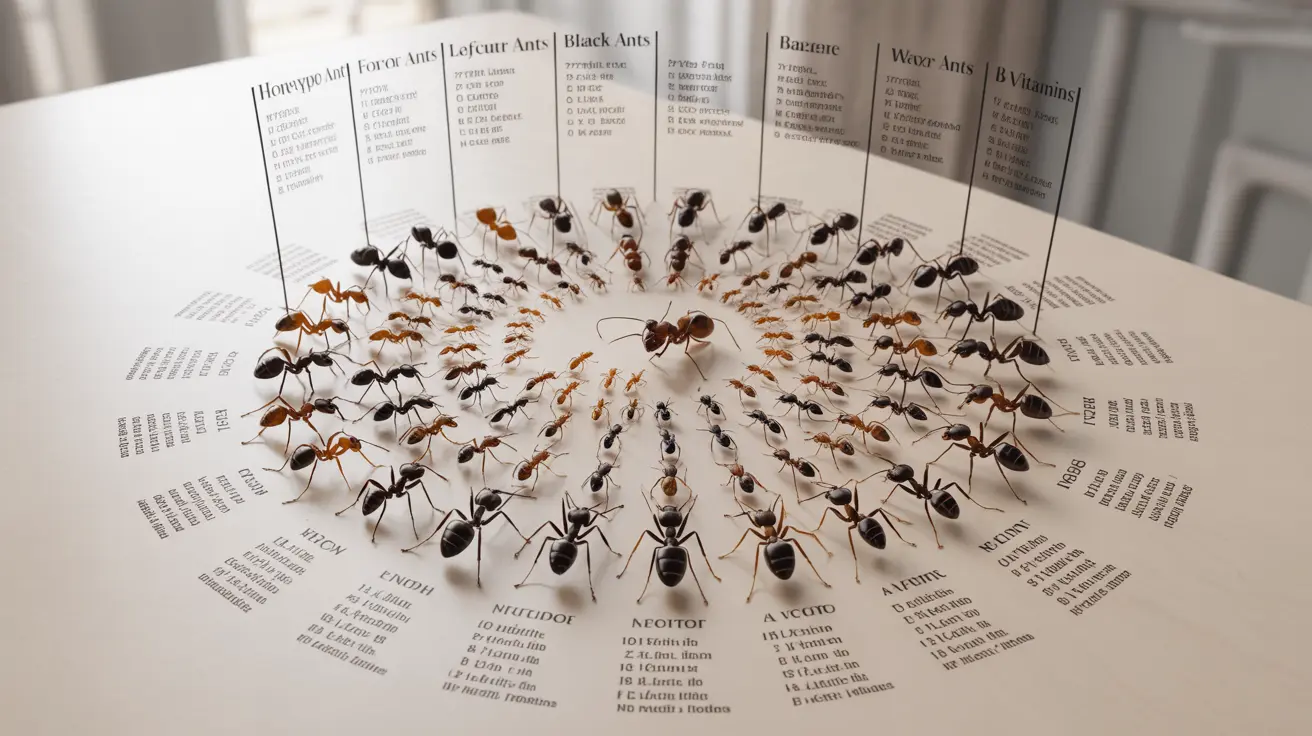Entomophagy, or the practice of eating insects, has gained increasing attention as a sustainable and nutritious food source. Among the various edible insects, ants have been consumed for centuries in many cultures worldwide. This comprehensive guide explores the safety, nutritional benefits, and practical considerations of consuming ants as food.
Understanding Edible Ant Species
Not all ant species are suitable for consumption. While many species are safe to eat, others should be avoided due to their defensive mechanisms or toxic compounds. Common edible species include:
- Honeypot ants
- Leafcutter ants
- Black ants
- Weaver ants
It's crucial to correctly identify ant species before consumption, as some can cause adverse reactions or contain harmful substances.
Nutritional Value of Ants
Ants are surprisingly nutritious, offering a concentrated source of protein, minerals, and other beneficial compounds. The nutritional profile typically includes:
- High-quality protein (up to 40-60% by dry weight)
- Essential minerals like iron and zinc
- Healthy fats
- B vitamins
- Fiber
Compared to traditional protein sources, ants require significantly fewer resources to produce and have a smaller environmental footprint.
Safe Preparation Methods
Proper preparation is essential to ensure safety and maximize nutritional benefits. Common preparation methods include:
Cleaning and Collection
Carefully collect ants from clean environments, avoiding areas treated with pesticides or chemicals. Remove any debris or foreign materials.
Cooking Techniques
Most ant species should be cooked before consumption to eliminate potential parasites and improve digestibility. Popular methods include:
- Roasting or toasting
- Boiling
- Sautéing
- Dehydrating
Health Considerations and Risks
While ants can be a healthy food source, certain precautions should be taken:
Allergies and Reactions
People with shellfish allergies may react to ants due to similar proteins. Always start with small amounts when trying ants for the first time.
Safety Precautions
Avoid consuming ants from:
- Urban areas with potential pesticide exposure
- Unknown species
- Fire ant colonies
- Areas near toxic plants
Environmental Impact and Sustainability
Ant consumption represents a sustainable alternative to traditional protein sources. Benefits include:
- Lower greenhouse gas emissions
- Reduced water consumption
- Minimal land use requirements
- Natural pest control integration
Frequently Asked Questions
Can you safely eat ants and which species should be avoided?
Yes, many ant species are safe to eat, but fire ants, carpenter ants, and other aggressive species should be avoided. Always identify the species before consumption and avoid ants from areas treated with pesticides.
What are the nutritional benefits of eating ants compared to other protein sources?
Ants provide comparable protein content to traditional meat sources while offering additional minerals and vitamins. They're particularly rich in iron, zinc, and B vitamins, with a better environmental impact than conventional protein sources.
How should ants be prepared to reduce health risks like allergic reactions and parasites?
Ants should be thoroughly cleaned and cooked before consumption. Boiling, roasting, or dehydrating are effective methods to eliminate parasites and reduce the risk of allergic reactions. Always source ants from clean, pesticide-free environments.
Are there any health concerns or allergies associated with eating ants?
People with shellfish allergies may experience cross-reactions to ants. Some individuals might also be sensitive to formic acid present in certain ant species. Start with small amounts and monitor for any adverse reactions.
How do ants contribute to sustainable and environmentally friendly food practices?
Ant farming and harvesting require minimal resources compared to traditional livestock, producing fewer greenhouse gases and using less water and land. They can be sustainably harvested from natural environments when done responsibly.




